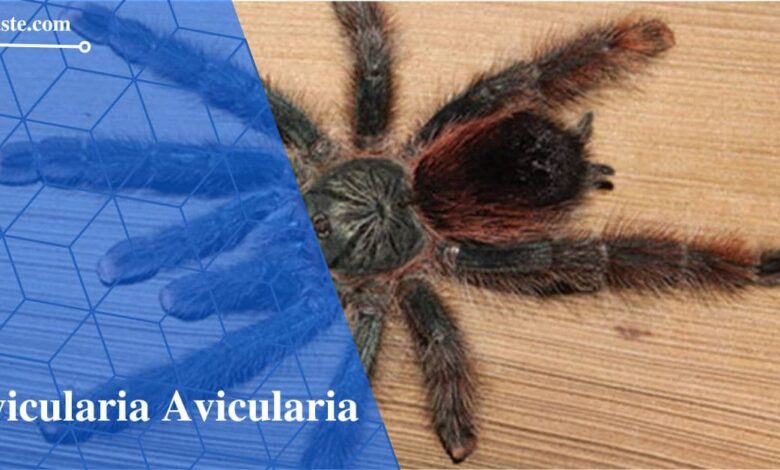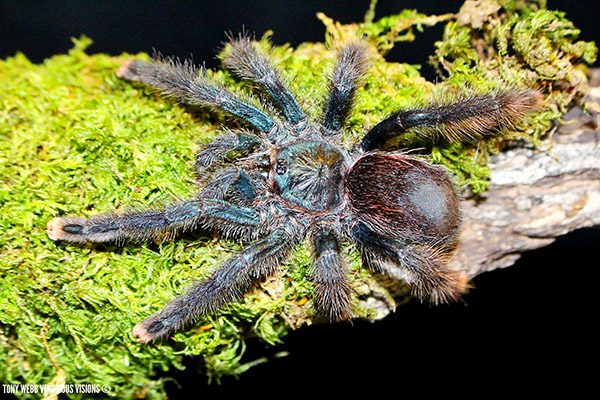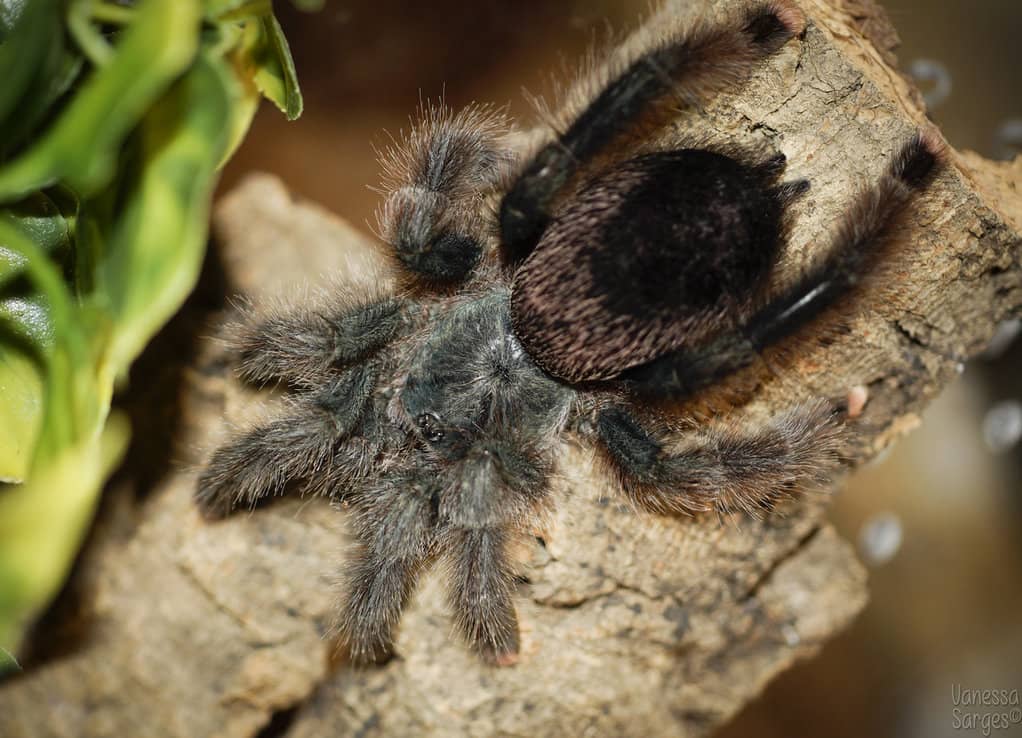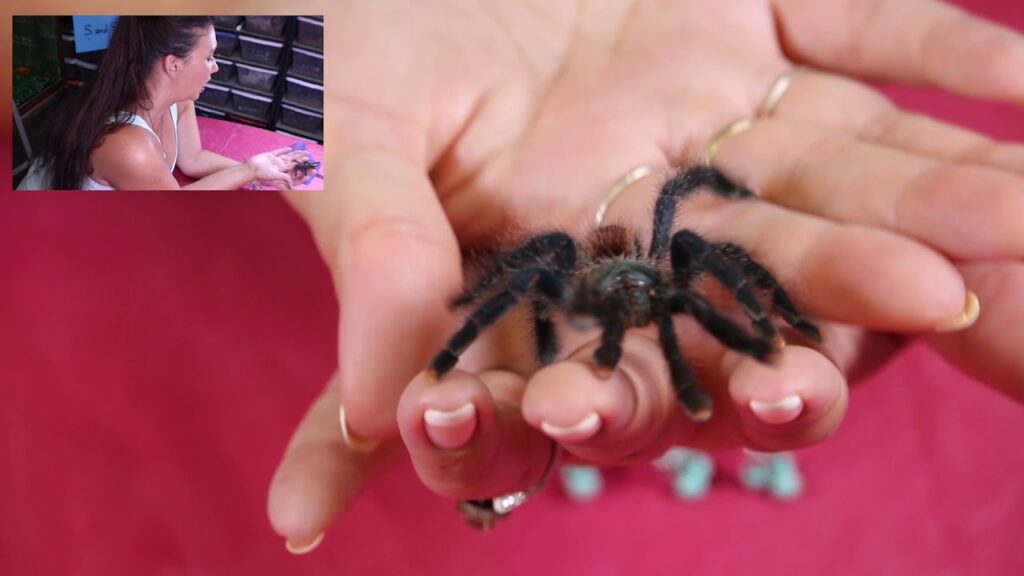Avicularia Avicularia – Discover Today!

This species has captivated the interest of arachnid enthusiasts and researchers alike.
Avicularia avicularia, commonly known as the Pink Toe Tarantula, is a fascinating species of arboreal tarantula found in the tropical rainforests of South America. With its distinctive pinkish toes and intricate web-spinning capabilities.
In this article, we will explore the physical characteristics, habitat preferences, behaviors, feeding habits, conservation status, and interactions with humans of the Avicularia avicularia species.
Physical Characteristics Of Avicularia Avicularia – You Should Know!

- Body Structure: Avicularia avicularia boasts a slender body structure, equipped with long and agile legs that aid in its arboreal lifestyle. They are known for their striking resemblance to tree bark, allowing them to blend seamlessly into their environment.
- Coloration and Markings: The pink toe tarantula derives its name from the delightful pink tips on its leg joints. Their overall coloration ranges from dark brown to black, with subtle patterns and markings that enhance their camouflage abilities.
Habitat And Distribution – Have A Look At Them!
- Natural Habitat: Avicularia avicularia is predominantly found in the tropical rainforests of South America, where it dwells among the lush foliage of trees. They prefer humid environments that mimic their natural habitat.
- Geographical Distribution: These charming arachnids can be spotted in countries such as Brazil, Venezuela, and Suriname. Their presence extends across various regions of South America, showcasing the adaptability of this species.
Read Also: Fastbackroundcheck – Comprehensive Knowledge!
Behavior And Reproduction – Learn And Thrive!

- Social Behavior: Despite their solitary nature, Avicularia avicularia occasionally display communal living tendencies in the wild. This behavior is unique among tarantula species and adds an intriguing layer to their social dynamics.
- Reproductive Patterns: During the mating season, male pink toe tarantulas embark on a quest to find receptive females. The courtship ritual involves intricate movements and vibrations to woo their potential mates, leading to the continuation of this captivating species.
Read Also: Human Gathering Cult – Understanding The Truth Behind It!
Feeding Habits Of Avicularia Avicularia – Delve In!
Dietary Preferences:
Avicularia avicularia, commonly known as the pink toe tarantula, has a diverse diet that mainly consists of insects such as crickets, grasshoppers, and cockroaches. They are known to be opportunistic feeders and will eat a variety of prey items.
Feeding Strategies:
When hunting, Avicularia avicularia uses its strong front legs to grab and immobilize prey. They inject venom into their prey using their fangs, allowing them to digest their food externally before consuming it. These tarantulas are skilled ambush predators and often wait for prey to come within striking distance.
Read Also: Is Heel Pain: A Sign Of Cancer – Unveiled The Symptoms!
Interactions With Humans – Explore Together!

- Captivity as Pets: Avicularia avicularia is a popular choice among tarantula enthusiasts due to its striking appearance and relatively docile nature. They are often kept as pets in captivity, with proper housing and care requirements to ensure their well-being.
- Research and Education Opportunities: Studying Avicularia avicularia in captivity provides valuable insights into their behavior, biology, and conservation needs. These tarantulas also offer educational opportunities to learn about arachnid diversity and the importance of preserving their natural habitats in the wild.
Read Also: Big Data Airline Thegreenforestresort. Co.Id – Let’s Explore!
Frequently Asked Questions:
1. Are Pink Toe Tarantulas dangerous to humans?
Pink Toe Tarantulas, including Avicularia avicularia, are generally considered to have mild venom that is not harmful to humans. Their bites may cause some discomfort, similar to a bee sting, but severe reactions are rare.
2. What is the typical lifespan of Avicularia avicularia in the wild and captivity?
In the wild, the lifespan of Avicularia avicularia is estimated to be around 5 to 10 years, depending on various factors such as predation, habitat quality, and availability of food. In captivity, with proper care and conditions, they can live even longer, sometimes reaching up to 15 years or more.
3. How can one differentiate between male and female Avicularia avicularia?
One way to differentiate between male and female Avicularia avicularia is by examining their physical characteristics. Mature males typically have longer, thinner bodies and longer legs compared to females.
4. What are the key factors influencing the conservation status of Pink Toe Tarantulas?
Habitat destruction, climate change, and the illegal pet trade threaten the conservation status of Pink Toe Tarantulas, like Avicularia avicularia, by depriving them of suitable habitats, disrupting ecosystems, and contributing to population declines.
In A Nutshell:
Avicularia avicularia, the Pink Toe Tarantula, with its slender body, distinctive pink toes, and arboreal lifestyle, captivates both enthusiasts and researchers alike, underscoring its significance in the ecosystem and the need for conservation efforts to ensure its survival.
Must Read:



